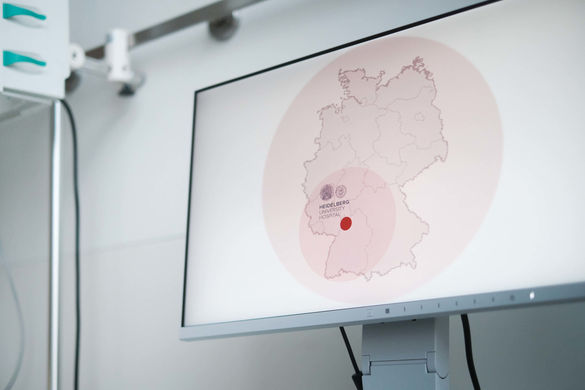Services
- Careful realistic feasibility assessment
- The study participants (children, adolescents and (young) adults) are selected by the respective clinics and departments based on the inclusion and exclusion criteria of the trial protocol and then recruited.
- Owing to our thorough and realistic feasibility assessment, we have been able to reach the planned patient recruitment goals in almost all of our trials and even exceed them (overrecruiting) in several ones.
- Above-average rapid patient recruitment
- The following sources are used to recruit study participants:
- Disease-specific national and international patient registries
- Own patient databases of various departments of the CCAM
- Specialist networks (with cooperating pediatric practices and clinics)
- After potential study participants identification by the respective departments of the CCAM, the clinical trial conduct, including all study visits, is carried out by the paedKliPS study staff in the paedKliPS infrastructure.
- During the trial course, the trial participants remain under the professional supervision of the referring colleagues and receive multidisciplinary (standard and trial-specific) care.
- Multidisciplinary conduct of clinical trials
Mission
Efficient cross-regional recruitment after a careful feasibility assessment guarantees a successful trial conduct.
Background
Owing to our close interdisciplinary cooperation with pediatric experts from the Center for Children and Adolescent Medicine (CCAM) und Center for Rare Diseases, which have an excellent national and international network in their respective disease areas, we can ensure rapid and efficient (over)cross-reginal study participants recruitment. Our focus lies in the recruitment for rare metabolic, neurological, neuromuscular, nephrological, endocrinological, cardiological as well as other diseases.
Our indication areas
Rare metabolic diseases
- Amino acid metabolism disorders (phenylketonuria/PKU, maple syrup urine disease, tyrosinemia, etc.)
- Organoacidurias (glutaric aciduria type I, methylmalonic aciduria, propionic aciduria)
- Carbohydrate metabolism disorders (glycogen storage disease/glycogenosis, galactosemia, hereditary fructose intolerance, etc.)
- Fatty acid oxidation disorders (MCAD, VLCAD, LCHAD, carnitine metabolism disorders)
- Respiratory chain defects and related disorders
- Cholesterol biosynthesis defects (e.g. Smith-Lemli-Opitz syndrome, etc.)
- Creatine biosynthesis defects
- Neurotransmitter defects
- Purine and pyrimidine metabolism disorders
- Lysosomal storage diseases
Rare neuromuscular diseases
- Spinal muscular atrophy
- Duchenne muscular dystrophy, congenital muscular dystrophies and myopathies, limb girdle muscular dystrophies
- Hereditary neuropathies
- Inflammatory myopathies and neuropathies
Nephrological diseases
- Congenital anomalies of kidney and urinary tract, including cystic kidney disease
- Hereditary and immune-mediated glomerulopathies, tubulopathies as well as rare metabolic diseases affecting kidneys
Endocrinological diseases
- Type 1 diabetes mellitus
- Growth disorders (with short and tall stature)
- Obesity
- Thyroid disorders (hypothyroidism, hyperthyroidism, thyroiditis, goiter)
- Parathyroid disorders (hyperparathyroidism, hypoparathyroidism, pseudohypoparathyroidism¬)
- Bone metabolism disorders (abnormal calcium, phosphate and vitamin D metabolism)
- Adrenal gland disorders (adrenogenital syndrome, Addison's disease, Cushing's and Addison's disease and Cushing's syndrome)
- Disorders of puberty (pubertas praecox, pubertas tarda)
- Disorders of sex development (DSD)
- Hypothalamic-pituitary axis disorders: congenital or acquired, associated with craniopharyngioma or other brain tumors or after radiation, water balance disorders (diabetes insipidus)
Pediatric cardiological diseases
- Pulmonary arterial hypertension
- Heart failure due to congenital heart defects


